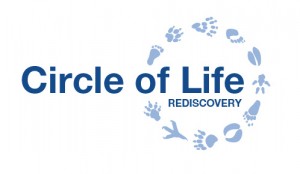Neuroscience of Early Years
Neuroscience of Early Years – here’s a little thought experiment. Imagine you have been asleep in a warm and comfortable snug place .… a feeling of such safety encompasses you… but … you cannot remain there … you are being forced out. It is inevitable you have to face a tunnel which leads to something never encountered before … bright light …. unmuffled sounds which resonate in your head …. and an almighty gasp leads to you to make the loudest noise … you scream … you cannot stop screaming … then a familiar sound and you feel the touch of something holding you … fear subsides as your mouth finds the food source…. you can return to the warm cosy La La land you know … but just for a short while… it will take you months and years to be able to subdue the innate fear and instinctive drive to seek an ‘other’ to comfort and protect you…. so …
What do you need to do to start feeling less fearful?
 “If it is true that as infants we are indeed “born into trauma”, is it possible that as adults we have the experience of trauma at the very foundations of our psyches and emotional lives? If so, does the degree of trauma vary from individual to individual?”
“If it is true that as infants we are indeed “born into trauma”, is it possible that as adults we have the experience of trauma at the very foundations of our psyches and emotional lives? If so, does the degree of trauma vary from individual to individual?”
Dr F.Woolverton 2018 (psychologytoday.com)
PROTECT AND SURVIVE
 As soon as any baby mammal is born the major task they face is survival. Human babies can survive even if the ‘other’ is a wolf or monkey as long as their basic needs are met. This is the premise of Attachment Theory (John Bowlby 1907 – 1990): the human baby needs a primary care giver as the human mammal is the least well equipped for survival.
As soon as any baby mammal is born the major task they face is survival. Human babies can survive even if the ‘other’ is a wolf or monkey as long as their basic needs are met. This is the premise of Attachment Theory (John Bowlby 1907 – 1990): the human baby needs a primary care giver as the human mammal is the least well equipped for survival.
Human babies rely on an ‘other’ for at least five years before they have really learned to control body functions, walk, communicate and feed themselves. A chimpanzee’s childhood also lasts 5 years but what they learn in those 5 years equips them very efficiently for survival, I am not sure the same can be said for a 5 year old human child. But then we expect our human offspring to learn so many more complex activities than mere survival, in fact perhaps we are moving further and further away from helping show our young how to survive life?
Child psychologist Donald Winnicott identified the basic needs a baby has as Holding, Feeding, Mutual Cooing, Reflection, and Shelter.
These behaviours, as well as helping the baby begin to control their body are essential for learning how to relate to ‘other’ and begin to trust ‘other.’ Recent research in neurobiology also suggests that another basic need for crucial healthy brain development and sociability is sensory enrichment. The baby brain requires a rich and diverse experience of sound, sight, taste, smell, touch if the foundation structure of neural pathways is to be strong and firm. If the foundation brain is strong then the child is able to begin to rationalise feelings and reduce fear. Humans need positive experience for relationship to ‘other’ and environment.
It is essential to provide opportunities for baby to experience natural and organic sensory stimuli as well as man-made stimuli. Why?
If a baby is to develop an understanding of the world and how she fits in it, she needs to explore other living growing things as well as inanimate objects. A sense of confidence and resilience can only grow when we feel in control of our life. We learn that feeling by being allowed to explore and discover what we can control and what we cannot. WE CAN KEEP ON BUILDING CONFIDENCE AND RESILIENCE THROUGHOUT OUR LIFE IF WE KEEP ENRICHING OUR SENSORY INPUTS (Read about our Therapeutic Play training to learn more).
WHAT’S LOVE GOT TO DO WITH IT?
 Goldilocks Fear alerted by the wrong eyes, ears, mouth.
Goldilocks Fear alerted by the wrong eyes, ears, mouth.
The new-born infant screams for attention and the ‘significant other’ responds. Bowlby identified the need for that ‘other’ to be consistent. Why? Because the baby is responding to the ‘other’ as a mammal and is learning to recognise certain sound, smell, taste, touch, sight as the important ‘other’ who supports her survival. What Bowlby called Secure Attachment is the relationship between baby and ‘other’ based on the ‘good enough’ meeting of the baby survival needs. Out of attachment comes the feeling which as the child matures, she identifies as love. She can begin to extend her circle of trust and permit ‘others’ to contribute to meeting her needs.
Circle of Trust
Trust starts with one to one relationships. The baby needs a consistent primary relationship if she is beginning to develop CORE SAFETY. If the primary relationship provides good enough basic needs then as the baby grows she will seek more relationships.
If the ‘significant others’ ability to meet the baby’s needs is lacking the child still attempts to attach to ‘other’ but she learns that ‘others’ will not support her survival all the time; she cannot quite trust ‘other’ to keep her feeling safe and she will never quite prevent Fear impacting on her experience of life. That too becomes what love means.
The quality and energy of our early relationships become the model for future relationships. We have stored information based on what we have experienced. It is helpful to consider our early attachment relationships to truly understand our Self – and it’s never too late to re-file feelings under different headings! Growing up continues throughout our whole life.
LEARNING TO BE OUR SELF
All our memory of events passed have their origin in the cocktail of sensory inputs our brain inputted at the time of the event.
 We make sense of our life by building a story; this is my beginning my middle and end. How we remember the story is defined by the sensory inputs which have occurred and whether they resulted in feelings of joy, sadness, anxiety, guilt, or Fear.
We make sense of our life by building a story; this is my beginning my middle and end. How we remember the story is defined by the sensory inputs which have occurred and whether they resulted in feelings of joy, sadness, anxiety, guilt, or Fear.
Because we have two systems of thinking: System 1 – unconscious and automatic and System 2 – conscious and controlled, we are not always aware of how stored sensory feelings may impact on our everyday events. Have you ever encountered a sudden change of mood which seemed to come from nowhere but emerges after chatting with a colleague? Or perhaps you may have an ‘irrational’ fear but no memory of any reason why you should have that fear?
These are some of my sensory triggers; a certain smell which makes me think of home, a song on the radio reminds me of teenage days, looking at old photos floods me with feelings of nostalgia which are happy, sad, the smell of polish on old wood stimulates deep memories of my old nursery, the feeling of moss under foot, hearing a robin sing, the feel of the trunk of a large oak tree, watching wood lice, making daisy chains. The sensory experiences I am having today may be fresh and new or they may resonate with sensory experiences from the past and the same feeling from years ago re-emerges in the present moment.
 Childhood is the time we all have used to build our sense of Self and there is so much to learn if we are to be able to ‘exist as oneself’ as Winnicott said. If you have or look after babies, infants, children the most significant benefit to their development is to go exploring. Crawling under tables and meeting the challenge of the stairs, feeling slushy mud splash your face, crunch across dried leaves.
Childhood is the time we all have used to build our sense of Self and there is so much to learn if we are to be able to ‘exist as oneself’ as Winnicott said. If you have or look after babies, infants, children the most significant benefit to their development is to go exploring. Crawling under tables and meeting the challenge of the stairs, feeling slushy mud splash your face, crunch across dried leaves.
Many early years providers now incorporate outdoor play and the mud kitchen as a regular feature, but if this sort of indoor and outdoor exploration is limited to a school/nursery environment it cannot become a fully integrated resource in the child’s life. The level of self-confidence and resilience that helps us know and understand our Self will largely depend on the diversity and strength of the sensory foundation brain neural connections. Because the brain is plastic we can continue to strengthen neural networks and shift feelings and thoughts if we provide the right sort of stimuli. The importance of sensory inputs to brain growth means we continue to benefit from enrichment and deepen our understanding of Self through connection to environment and Other.
 So ….get out and explore the world with babies, infants, children, old folk! Make a point of finding a new smell, a new sight, a new taste, a new noise and a new touch every day. If you like competitions then see who can enlarge their sensory input the most in a week! There are endless ways – just make sure you are having FUN and that no one feels JUDGED.
So ….get out and explore the world with babies, infants, children, old folk! Make a point of finding a new smell, a new sight, a new taste, a new noise and a new touch every day. If you like competitions then see who can enlarge their sensory input the most in a week! There are endless ways – just make sure you are having FUN and that no one feels JUDGED.
Kate Macairt, Director, Circle of Life Rediscovery CIC
 Transforming education, health and family through nature.
Transforming education, health and family through nature.
Circle of Life Rediscovery provides exciting and highly beneficial nature-centred learning and therapeutic experiences for young people, adults, and families in Sussex woodlands, along with innovative continuing professional development for the health, well being and teaching professionals who are supporting them.
Find out about our CPD’s here and our Forest School Training here. If you are keen to hear more about events and training please join our newsletter here.








